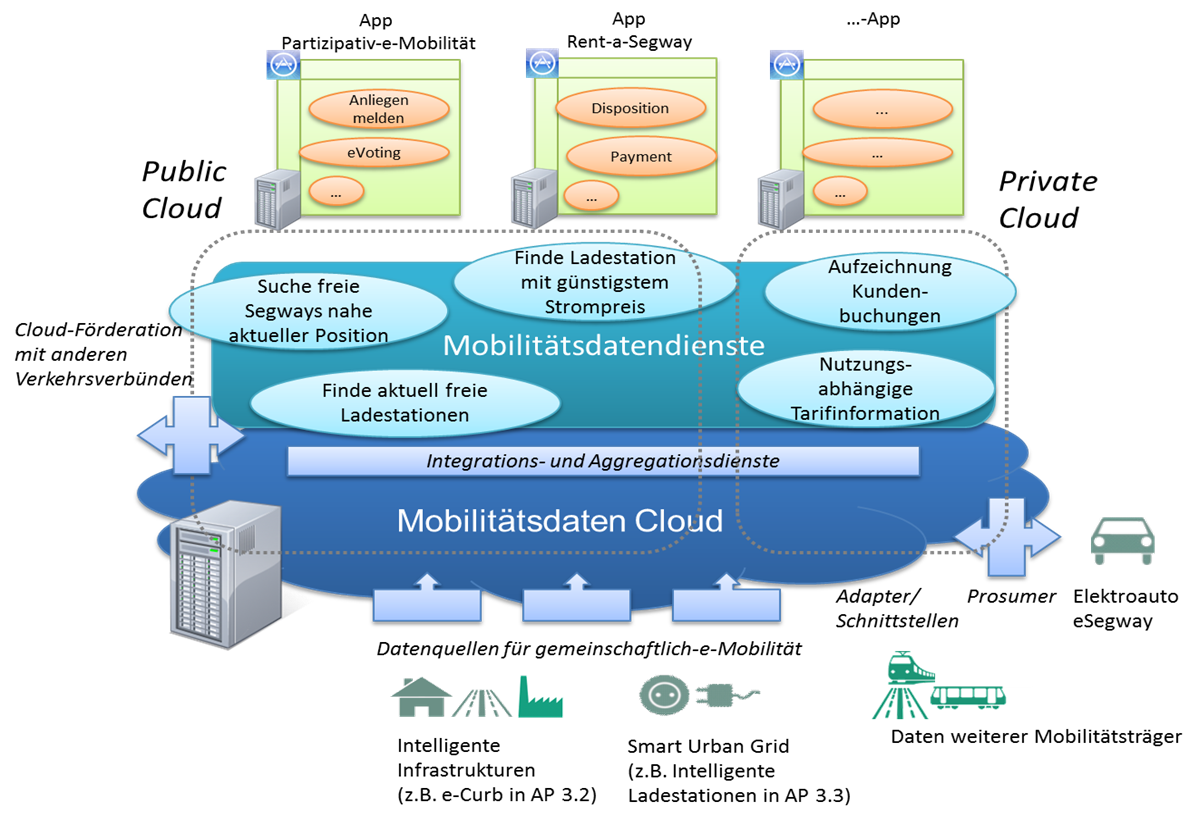Data and services for shared mobility
The mobility data cloud is an Internet based platform for the integration of mobility related data from different data providers. It offers a framework for the acquisition, aggregation, provisioning, and analysis of mobility relevant data originating from various sources, e.g. charging stations, position and battery charge condition of electric vehicles, utilization of vehicles, and data regarding public transport. These various types of data should facilitate the collaborative shared utilization of mobility resources such as electric vehicles, charging stations, etc. Thus, the mobility data cloud provides the base for integrating the different subsystems, which are of particular significance for establishing an optimized framework for shared collaborative mobility.
The starting point is given by mobility relevant information, which can be accessed over the interfaces of the belonging data sources/providers and can be made available over the data cloud. Thereby, on one hand it is important to consider the need for a public cloud and on the other hand the need for a private cloud. The public cloud provides non-sensitive mobility data and services, which are openly available for the various actors for re-use and exploitation. Furthermore, the private cloud is used for storing data, which is sensitive w.r.t. privacy and is only available to specific services/applications through the use of established cyber security standards. Data from the various mobility resources of the public cloud (e.g. positions of free charging stations) can be intelligently integrated and combined with data from the private cloud (e.g. customers’ reservations). This would make it possible to utilize the mobility data depending on the requirements of a particular application/service.
The mobility data cloud is largely based on the concept of Open Data, which prescribes that data should be made freely available in machine readable formats. Beyond this, the mobility data cloud should be openly accessible w.r.t. to the implementation of mobility services by developers from the community. This implies that the mobility data cloud is intended to provide a sort of a Platform-as-a-Service (PaaS) that should enable external developers to deploy services which have been implemented on the basis of the mobility data, which was provided and aggregated by the mobility data cloud. Through the opening of the mobility data cloud on the level of PaaS a new open platform emerges for the efficient handling of mobility relevant data and services.
 Fraunhofer-Gesellschaft | Shared use of electric mobility "GeMo"
Fraunhofer-Gesellschaft | Shared use of electric mobility "GeMo"